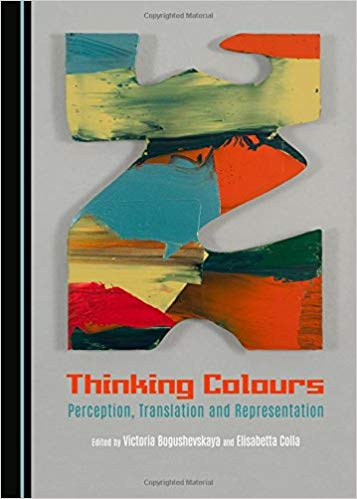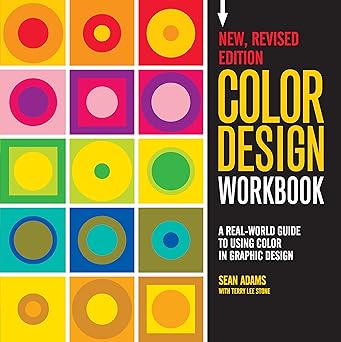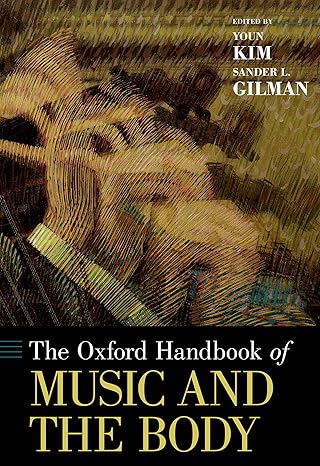The essays collected into this volume are organized into five interrelated sections exploring discourse on the interaction between sensation, perceptions of colour and the various forms of their cultural representation. The contributors analyse aspects related to colour labelling, its mediation and representation, consider traditional and new approaches to colour, and explore the cultural productivity of colour across different fields. Colour is presented within a conceptual framework that fosters alliances between the humanities and the social and natural sciences. Part I is dedicated to studying colour from a cognitive perspective, while Part II contains essays dealing with issues surrounding the translation of colour lexicons and covers topics such as the Chinese qing macro-colour category and colour metonymy in advertising. The papers grouped together in Part III explore the negotiation that occurs between colours and literature in a masterpiece of Chinese literary criticism Wenxin Diaolong (The Literary Mind and the Carving of Dragons) by Liu Xie, colour metaphors in Homeric epics, and finally the interpretation of colour in modern Portuguese youth novels. This is followed by Part IV, which examines the use of colour in the visual arts. The studies in Part V emphasize the usage of colour and colour preferences within different cultural and social environments, including peculiarities in design and architecture and the symbolism of colour in tourism. Many of the questions addressed throughout this volume stem from the dialogic interaction among the contributors representing various different fields of research. Two particular aspects are present throughout the volume and will have a profound effect on the reader, namely that the categorization and the interpretation of colour are a priori emotional and vary from culture to culture. Colour names have their own cultural memory and references; they can either remember or forget some notions relevant to the speakers cultural tradition. Second, as a cultural puzzle, colour produces very strong associative and symbolic meanings, thus ensuring it remains a strong semiotic resource and a powerful instrument for conveying and communicating meaning.
چکیده فارسی
مقالات گردآوری شده در این مجلد در پنج بخش مرتبط با یکدیگر سازماندهی شدهاند که گفتمانی را در مورد تعامل بین احساس، ادراک رنگ و اشکال مختلف بازنمایی فرهنگی آنها بررسی میکنند. مشارکتکنندگان جنبههای مربوط به برچسبگذاری رنگ، میانجیگری و نمایش آن را تجزیه و تحلیل میکنند، رویکردهای سنتی و جدید را برای رنگ در نظر میگیرند، و بهرهوری فرهنگی رنگ را در زمینههای مختلف بررسی میکنند. رنگ در یک چارچوب مفهومی ارائه می شود که اتحاد بین علوم انسانی و علوم اجتماعی و طبیعی را تقویت می کند. بخش اول به مطالعه رنگ از منظر شناختی اختصاص دارد، در حالی که قسمت دوم شامل مقالاتی است که به مسائل مربوط به ترجمه واژگان رنگی می پردازد و موضوعاتی مانند مقوله رنگ های کلان چینگ چینی و کنایه رنگ در تبلیغات را پوشش می دهد. مقالاتی که در قسمت سوم با هم گروهبندی شدهاند، مذاکراتی را که بین رنگها و ادبیات در شاهکار نقد ادبی چینی Wenxin Diaolong (ذهن ادبی و کندهکاری اژدها) توسط لیو زی، استعارههای رنگی در حماسههای هومری و در نهایت تفسیر از آن صورت میگیرد، بررسی میکنند. رنگ در رمان های مدرن جوانان پرتغالی به دنبال آن قسمت چهارم آمده است که به بررسی استفاده از رنگ در هنرهای تجسمی می پردازد. مطالعات در بخش پنجم بر استفاده از ترجیحات رنگ و رنگ در محیطهای فرهنگی و اجتماعی مختلف، از جمله ویژگیهای طراحی و معماری و نمادگرایی رنگ در گردشگری تأکید دارد. بسیاری از سؤالاتی که در این جلد به آنها پرداخته می شود، از تعامل گفت و گوی میان مشارکت کنندگانی که حوزه های مختلف پژوهشی را نمایندگی می کنند، ناشی می شود. دو جنبه خاص در سرتاسر جلد وجود دارد و تأثیر عمیقی بر خواننده خواهد گذاشت، یعنی دسته بندی و تفسیر رنگ عاطفی پیشینی است و از فرهنگی به فرهنگی دیگر متفاوت است. نام رنگ ها حافظه و ارجاعات فرهنگی خاص خود را دارند. آنها می توانند برخی از مفاهیم مرتبط با سنت فرهنگی گویندگان را به خاطر بسپارند یا فراموش کنند. دوم، رنگ به عنوان یک معمای فرهنگی، معانی تداعی و نمادین بسیار قوی تولید می کند، بنابراین تضمین می کند که یک منبع نشانه شناختی قوی و ابزار قدرتمندی برای انتقال و انتقال معنا باقی می ماند.
ادامه ...
بستن ...
Ebook details:
عنوان: Thinking Colours: Perception, Translation and Representation
نویسنده: Elisabetta Colla Victoria Bogushevskaya
ناشر: Cambridge Scholars Publishing; Unabridged edition edition (May 1, 2015)
زبان: English
شابک: 1443875295, 978-1443875295
حجم: 2 Mb
فرمت: True Pdf
ادامه ...
بستن ...










